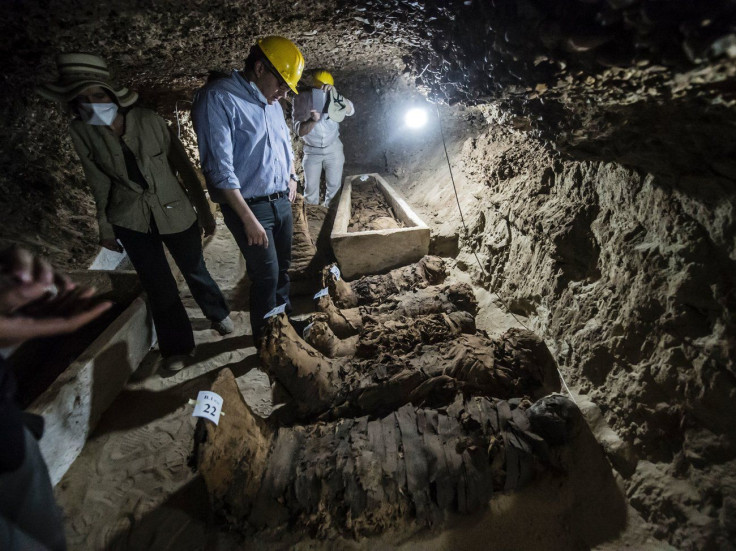Hundreds of Mummies Found Around The World’s Oldest Pyramid
A team of Polish archaeologists, from the Department of Egyptology at the University of Warsaw’s Faculty of Oriental Studies, have found hundreds of mummies around the Pyramid of Djoser, also known as the world’s oldest pyramid and the Step Pyramid of Djoser at Saqqara in Egypt.

The site is believed to be the necropolis - a cemetry for the inhabitants of Memphis. The mummies were in poor condition as their wooden coffins and other organic material had decayed. Ancient Origins said a majority of the mummies they discovered were laid to rest with only modest arrangements.
“This is in contrast to the elaborate burials of members of the elite and it would indicate that those buried at the site came from lower down in the social hierarchy,” said Ancient Origins.
The archaeologists have been working on this site for about 20-years and have made a number of important discoveries such as the graves of noblemen dating back to the 24 th - 21 st century BC, to the era of the 6 th dynasty.
Historians say Djoser was the heir of the last king of Egypt’s second dynasty. According to Ancient History Encyclopedia, Djoser was highly regarded as evidenced by the Famine Stele from the Ptolemaic Dynasty from 332 - 30 BCE. Djoser apparently saved the country from famine by re-building the temple of Khnum - the god of the River Nile. It's said that when Djoser restored the temple, the famine came to an end.
In regards to the pyramids, Egyptologists say, according to National Geographic, that pharaohs were expected to become gods in the afterlife.
“To prepare for the next world, they erected temples to the gods and massive pyramid tombs for themselves, filled with all the things rulers would need to guide and sustain himself in the next world,” it said.
To date, archeologists and researchers are captivated with the ancient Egyptian skills. “Archeaological digs on the fascinating site have revealed a highly organized community, rich with resources that must have been backed by a strong central authority,” said the National Geographic.
© Copyright IBTimes 2025. All rights reserved.





















